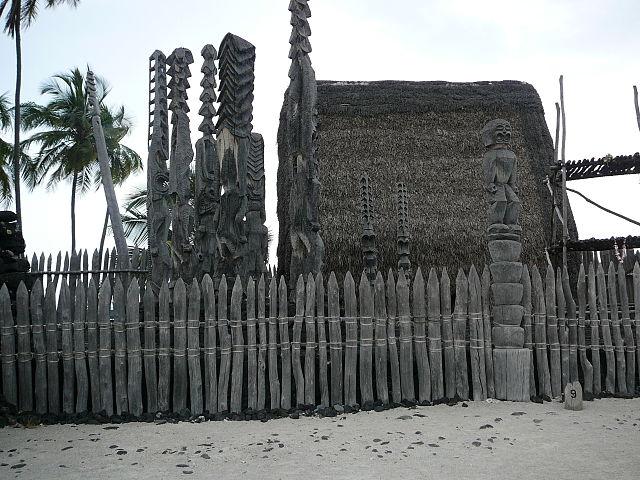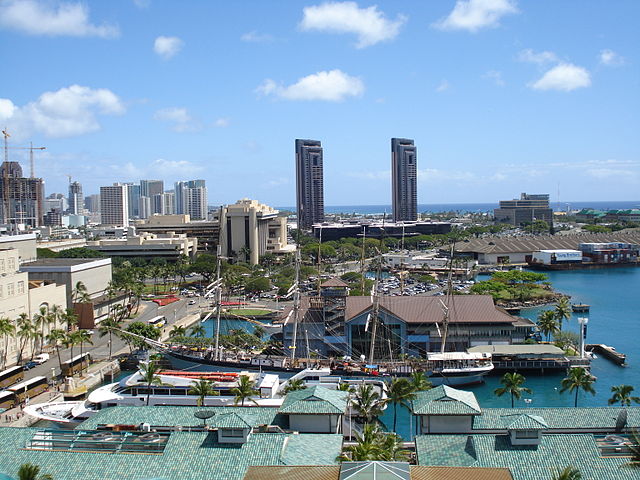Hawaiian architecture is a distinctive architectural style developed and employed primarily in the Hawaiian Islands. Though based on imported Western styles, unique Hawaiian traits make Hawaiian architecture stand alone against other styles. Hawaiian architecture reflects the history of the islands from antiquity through the kingdom era, from its territorial years to statehood and beyond.
Opened in 1901, the Moana Hotel is a model for contemporary Hawaiian architectural design
Hale O Keawe
More recent larger hale in Puʻuhonua o Hōnaunau National Historical Park, the Big Island of Hawaii
One of the houses in the mission houses museum, Honolulu.
The Aloha Tower is a retired lighthouse that is considered one of the landmarks of the state of Hawaii in the United States. Opened on September 11, 1926, at a then astronomical cost of $160,000, the Aloha Tower is located at Pier 9 of Honolulu Harbor. It has been, and continues to be, a guiding beacon welcoming vessels to the City and County of Honolulu. Just as the Statue of Liberty greeted hundreds of thousands of immigrants each year to New York City, the Aloha Tower greeted hundreds of thousands of immigrants to Honolulu. At 10 stories and 184 feet (56 m) of height topped with 40 feet (12 m) of flag mast, for four decades the Aloha Tower was the tallest structure in Hawaii. It was built in the Hawaiian Gothic architectural style.
The Aloha Tower has been greeting vessels to port at Honolulu Harbor since September 11, 1926.
The tower in daylight (1959)
Docked at the Aloha Tower Complex is the Falls of Clyde, the only iron-hulled, four-masted ship in the world.
The Hawaii Maritime Center and the Falls of Clyde seen from Aloha Tower, looking east








